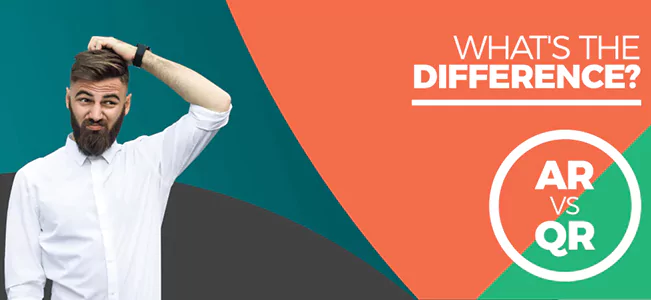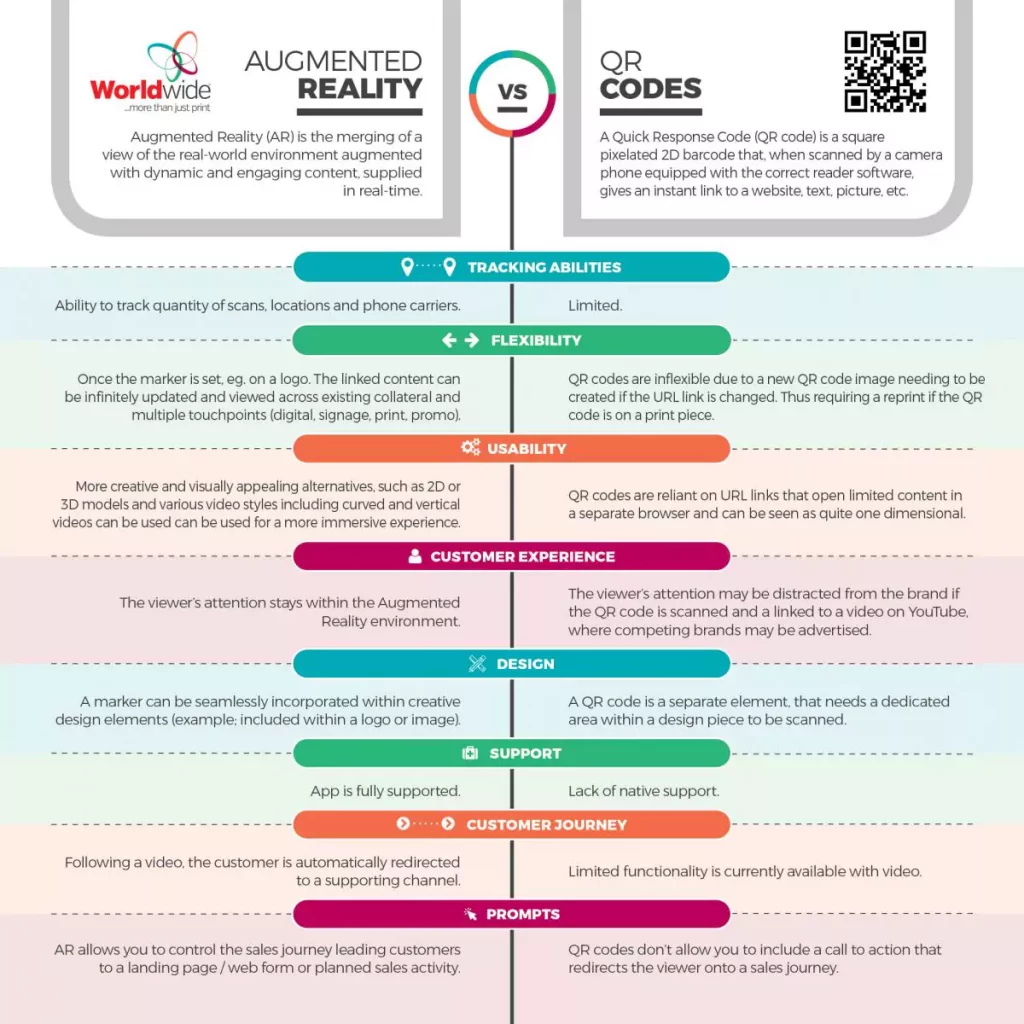Menu
Menu
Home > Blogs > Technology > QR Codes vs Augmented Reality

Gone are the days when print was restricted to its physical limitations of paper and ink. Today, print can transport you to a whole new, digital world – with the clever use of QR and AR technology.
But how do you know which option is best for your business? In this blog, we’ll break down the differences between QR and AR, while highlighting their respective pros and cons.
A Quick Response (QR) code is a square, pixelated, 2D barcode that when scanned by a smartphone equipped with the correct reader software, gives an instant link to a website, text or image.
You might see a QR code used on signage at a sports store to drive downloads of their app. Alternatively, you might simply use a QR code to add a new contact in your smartphone.
QR codes are free, easy to set up and simple to use, as most smartphones have built-in QR code scanners.
Unfortunately, you can’t spell convenience without con, and QR codes have a few of those, including:
Despite their limitations, QR codes still have benefits for certain marketing campaigns. For example, a QR code can direct multiple customers to numerous personalised webpages, which you would not use AR for.
On the other hand, Augmented Reality (AR) is the merging of a view of the real-world environment augmented with dynamic and engaging content, supplied in real-time.
You might see AR used to show a homeowner what a paint colour would look like on their walls, or you might simply scan an AR-printed logo with your phone and be linked to an informative video.
AR is ever-evolving, and with that comes a number of advantages, including:
Compared to QR, the setup for AR is a bit more laborious – but good things don’t usually come easy. Consumers need to download the app to get started, and despite their flexibility, specified markers, let’s say a company logo, can only divert users to a single destination at a time.
The Bottom Line? QR and AR will continue to co-exist, however, AR is better for your branding and marketing reporting.
AR amplifies your brand recognition in a way that QR codes just can’t.
And since AR is so flexible, you won’t be left with an unsightly and intrusive bit of code that links to a redundant landing page – or even worse, a broken or dodgy link that has nothing to do with your brand.
These days print and AR can work together in all sorts of unexpected and creative ways.
Contact your local Worldwide Centre for a free demo.

"*" indicates required fields